Impact Studies
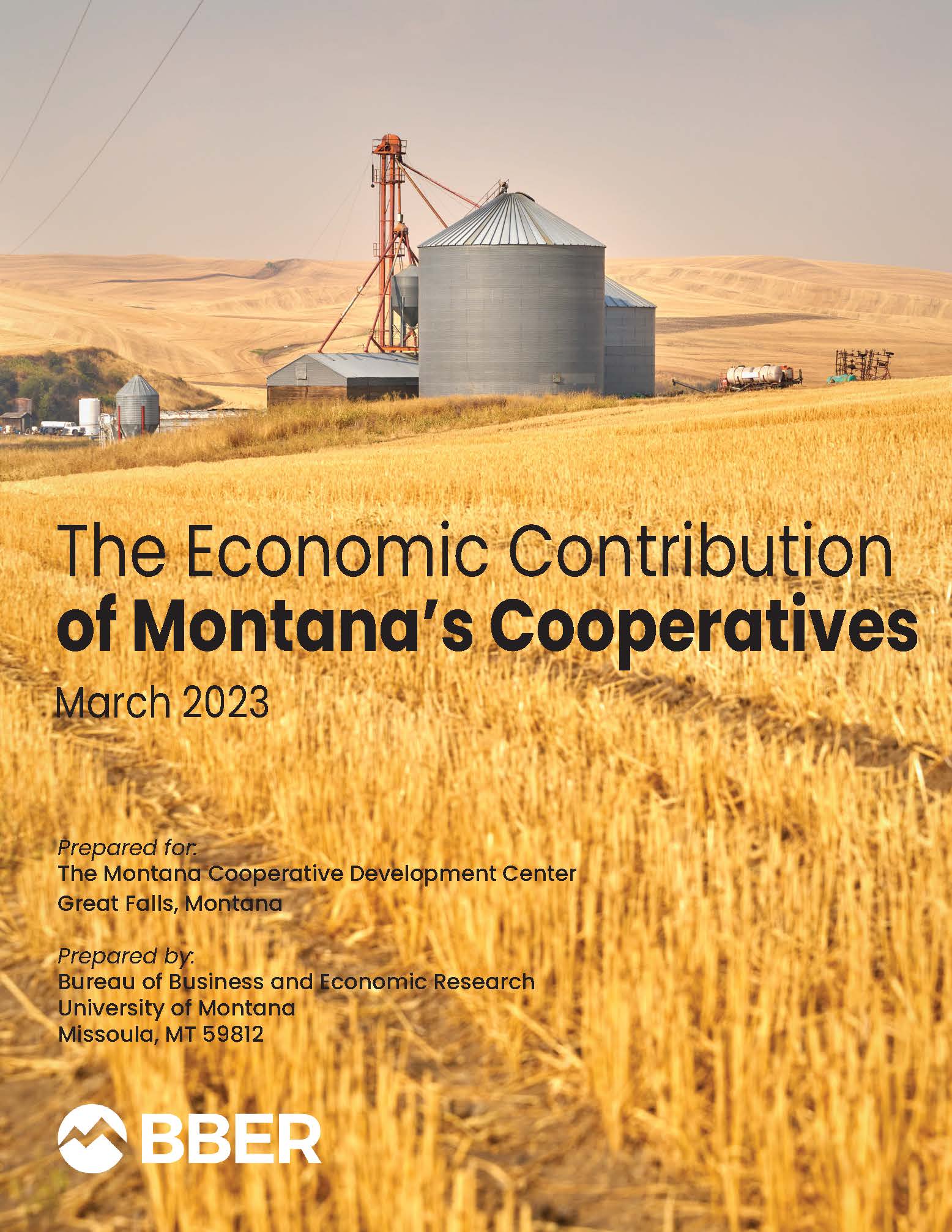 |
The Economic Contribution of Montana's CooperativesBy Bureau of Business and Economic Research Cooperatives in Montana are so ubiquitous that their unique importance to the economies of the communities where they are located can be overlooked. This study aims to address that situation. Using operating and financial data gathered from 126 separate cooperative businesses located in every corner of the state, we construct a measure of their ultimate economic contribution in terms of jobs, incomes, spending, population, and other measures. In carrying out this task, we also learn many details about what they do, who they serve, and how their activities underpin the prosperity of many parts of the state. Our basic finding is that the presence of cooperative businesses in Montana ultimately leads to an economy with more jobs, more income, more sales and more people and families than would exist in their absence. |
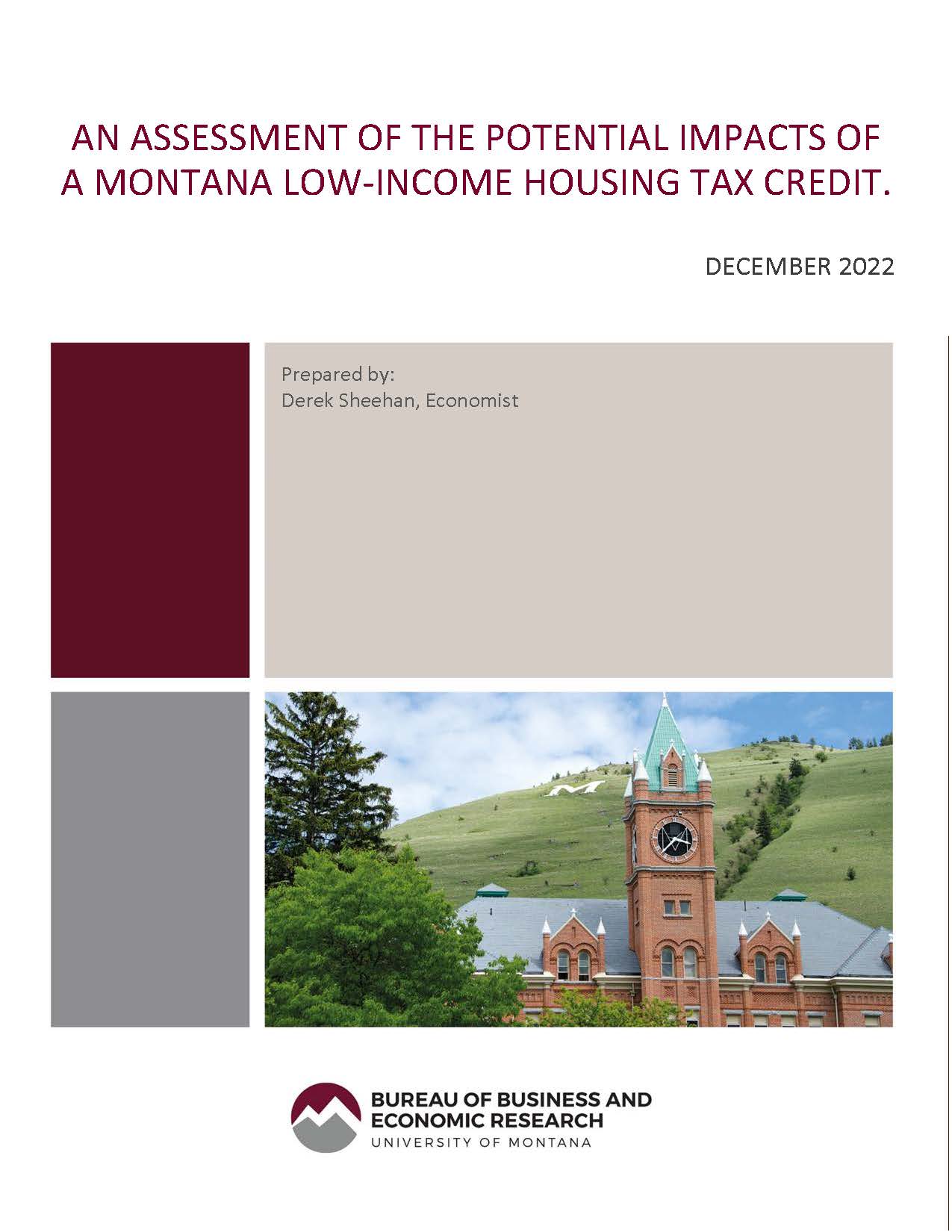 |
An Assessment of the Potential Impacts of a Montana Low-Income Housing Tax CreditBy Bureau of Business and Economic Research This economic impact study report considers the potential economic impact of a state of Montana Low Income Housing Tax Credit (LIHTC) program using a modified version of MT HB 397 (2021) as a basis of study. The report highlights the opportunity to use a state of Montana LIHTC program meant to “piggy back” on the Federal LIHTC program to leverage currently underutilized federal LIHTC resources and related private investment to develop and preserve additional affordable rental housing to address community housing needs across Montana. Report Highlights:
|
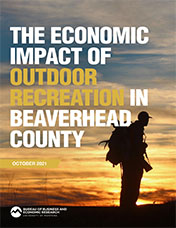 |
The Economic Impact of Outdoor Recreation in Beaverhead CountyBy Bureau of Business and Economic Research Outdoor recreation in Beaverhead County spans a wide variety of activities, including big game hunting, upland game bird hunting, hiking, camping, rafting, mountain biking, and angling. This study represents a comprehensive effort to assess the size of that total economic contribution. We have gathered and assembled data on the size and scope of measurable outdoor recreation in Beaverhead County.
|
 |
The Economic Impact of the Montana Osteopathic Medical SchoolBy Bureau of Business and Economic Research This is a study of how the construction and successful operation of a four-year graduate medical school
located in Great Falls, Montana would affect the economy of the state and its regions. The proposed
Montana Osteopathic Medical School (MMS) is a new, privately funded, not-for-profit school that would
be the first of its kind in Montana. |
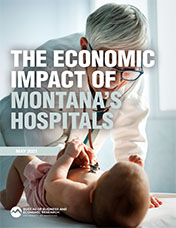 |
The Economic Impact of Montana's HospitalsBy Bureau of Business and Economic Research This is a study of the contributions made to the economy of the state of Montana by the production, employment, spending and tax revenues that can be attributed to 58 of the state's hospitals. Hospitals' high paying jobs, high value-added production, and significant tax payments add to the state economy in their own right. As the dollars paid to employees, vendors and governments are in turn respent in the economy, their ultimate significance grows. The Bureau of Business and Economic Research (BBER) at the University of Montana was retained by the Montana Hospital Association (MHA) to carry out an analysis how Montana hospitals enhance the state's economy. This report summarizes and documents the results. |
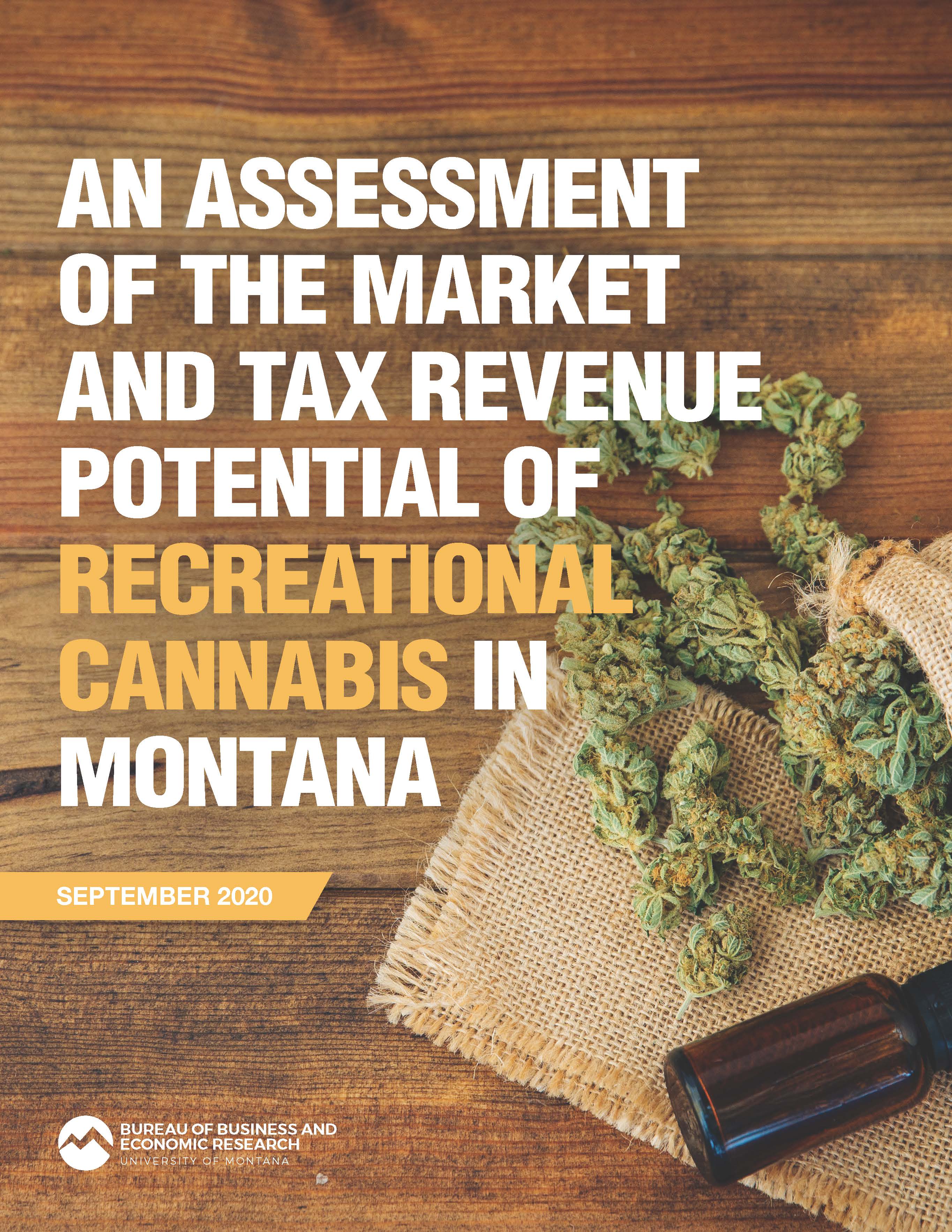 |
An Assesment of the Market and Tax Revenue Potential of Recreational Cannabis in MontanaBy Bureau of Business and Economic Research This report presents the findings of research intended to quantify the potential size of the recreational cannabis marketplace in Montana, and the potential tax revenue that could be collected in the event that recreational cannabis achieves legal status as envisioned in initiatives CI-118 and I-190 on the November ballot. This independent effort conducted by the Bureau of Business and Economic Research at the University of Montana was commissioned by New Approach Montana, a political campaign aimed at passing the initiatives. The research uses publicly available data and draws on similar research conducted in other states. |
 |
The Economic Impacts of Covid-19 in Montana Revised Analysis May 2020By Bureau of Business and Economic Research The Bureau of Business and Economic Research at the University of Montana (BBER) released a preliminary analysis of the impacts of the Covid-19 pandemic on the Montana economy in April. That report was aimed at addressing the information void on state economic performance, since the time lag involved in producing comprehensive data on the state and its regions is substantial. Based on data available through early April, the BBER analysis found that the economic downturn caused by the pandemic would be more severe than the Great Recession, with average employment in 2020 down by more than 50,000 jobs and personal income down by almost $4 billion, compared to earlier projections. In the month that has elapsed since that report was completed, more data has become available. |
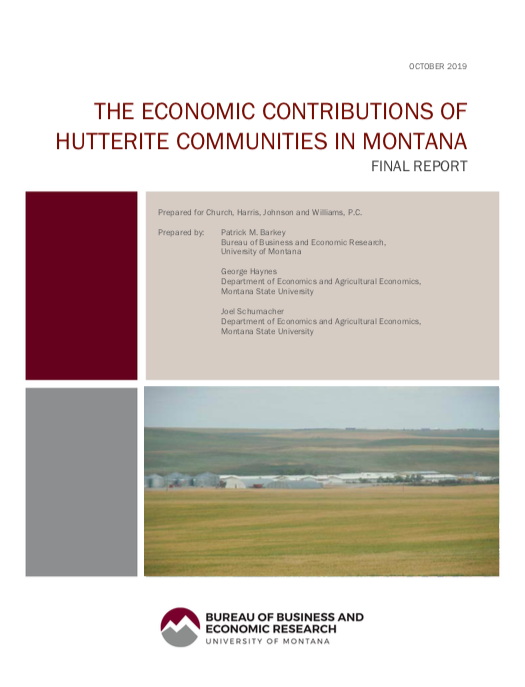 |
The Economic Contributions of Hutterite Communities in MontanaBy Bureau of Business and Economic Research and Department of Economics and Agricultural Economics This study of the Economic Contributions of the Lehrerleut Branch of the Hutterite Communities in Montana was performed by the Bureau of Business and Economic Research at the University of Montana (BBER), in partnership with the Montana State University Department of Economics and Agricultural Economics. Our basic finding is that the presence of the 81 farming operations owned and operated by the 38 Lehrerleut Communities examined in this study support production, employment and income in the Montana economy that is significant in size and scope. |
 |
The Economic Impact of Research in the Montana University SystemBy Brandon Bridge The primary purpose of this report is to quantify the ways in which research performed in the Montana University System impacts the state economy. This assessment is necessarily incomplete, as some dimensions of research activities are difficult to objectively and accurately quantify, as detailed below. But even restricting the analysis to those aspects of its economic footprint which are more amenable to quantification, we find that the impacts of MUS research activity are sizable. |
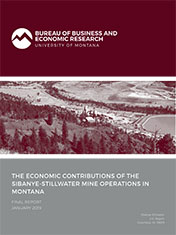 |
The Economic Contributions of the Sibanye-Stillwater Mine Operations in MontanaBy Bureau of Business and Economic Research This is a study of the contributions made to the economy of the state of Montana by the production, employment, spending and tax revenues that come about due to the state’s largest hard rock metal mining operation – the Sibanye-Stillwater mines and processing facilities in south central Montana. The company’s high-paying jobs, high value-added production, and significant tax payments add to the state economy in their own right. As the dollars paid to employees, vendors, and governments are in turn respent in the economy, their ultimate significance grows. The Bureau of Business and Economic Research at the University of Montana (BBER) was retained by Sibanye-Stillwater to carry out an analysis how the operations of the mining complex makes the state’s economy larger, more prosperous, and more populous. |
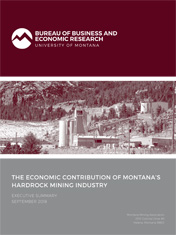 |
The Economic Contribution of Montana's Hardrock Mining IndustryBy Bureau of Business and Economic Research What would the economy of the state of Montana look like if the eight largest hardrock mines – producing copper, palladium, gold, talc, cement and other products and materials – did not exist? The communities in which those facilities are located – the businesses, the households and governments whose economic fortunes are closely tied with the success of Montana's mines – already understand the importance of the hardrock mining industry to their own prosperity. It is perhaps less apparent – but no less important – to the population of the state as a whole. |
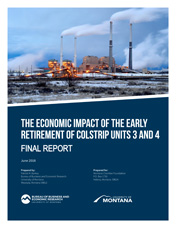 |
The Economic Impact of the Early Retirement of Colstrip Units 3 and 4By Bureau of Business and Economic Research This study examines the implications of closing Units 3 and 4 of the Colstrip Electric Generating Station early. Specifically, we examine the consequences for jobs, income, population, economic output and other measures of economic activity. Watch the Colstrip study press conference on Facebook live. (Watch now.) |
 |
The Economic Impact of Medicaid Expansion in MontanaBy Bureau of Business and Economic Research Medicaid expansion has a substantial effect on Montana's economy. Assuming that enrollment plateaus near current levels, Medicaid expansion will introduce approximately $350 million to $400 million of new spending to Montana's economy each year. This spending ripples through Montana's economy, generating approximately 5,000 jobs and $270 million in personal income in each year between 2018 and 2020. In addition to generating economic activity, Medicaid expansion appears to improve outcomes for Montanans—reducing crime, improving health, and lowering debt. While the state pays a nominal amount for these benefits, the costs to the state budget are more than offset by the savings created by Medicaid expansion and by the revenues associated with increased economic activity. |
 |
The Continuing Economic Impact of Craft Brewing in MontanaBy Bureau of Business and Economic Research In this study we examine the economic contributions of craft brewing to the state of Montana. This is the third iteration of this research, previously completed in 2012 and 2014, separately. We find the Montana craft brewing industry to be experiencing rapid growth, with total beer production having increased by 87% since we began collecting data in 2010. Measured by other metrics the industry is growing even faster, with sales, employment, compensation, and expenditures all having more than doubled in that time. Given all this activity, we find the total economic impact of craft brewing to be sizeable, contributing 1,044 jobs, almost $34 million in personal income, $103 million in output by Montana businesses, and 278 additional residents living in the state due to the operations of Montana state brewers. New to this study is Montana brewer agricultural purchases, totaling about $4.5 million dollars in 2015. Finally we look at some of the intangible benefits of brewpubs and find them to invigorate neighborhoods, repurpose industrial properties and bring communities together. |
 |
The Economic Contribution of Grizzly Intercollegiate AthleticsBy Bureau of Business and Economic Research Intercollegiate sports in general, and the University of Montana's sports programs in particular, have grown in popularity, impact and visibility. The business aspects of the spectator sports activities everything from spending by attendees to the marketing of apparel and merchandise have important consequences for businesses, households and government in Missoula. This study examines the size and scope of those economic contributions. |
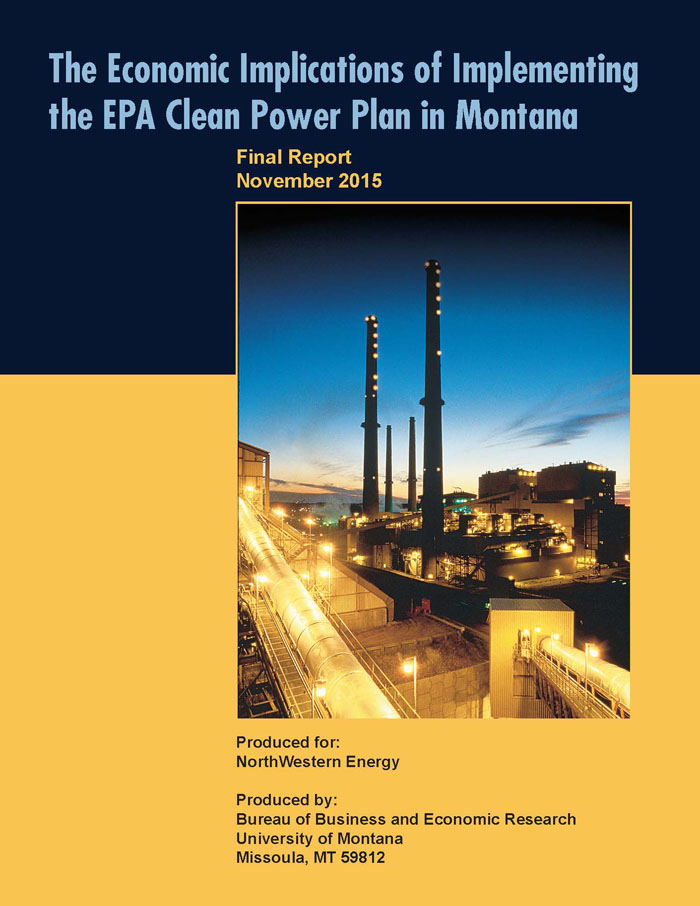 |
The Economic Implications of Implementing the EPA Clean Power Plan in MontanaBy Bureau of Business and Economic Research On August 3, 2015, the U.S. Environmental Protection Agency announced its Final Rule for its Clean Power Plan aimed at reducing CO2 emission rates for electric generating units around the country. The implementation of this plan will require a larger percentage reduction in CO2 emission rates – comparing 2030 targets to the 2012 baseline – than any other state. The large revision in Montana's required CO2 emission reduction has narrowed the choice set for compliance for our state. This report estimates the economic impact of a scenario in which the main emission reducing mechanism is the closure of Colstrip SES. Utilizing the REMI economic model the report details employment, business gross receipts, personal income, tax and non-tax revenue, population and consumption impacts. |
 |
The Economic Impact of Trailhead Commerce ParkBy Patrick Barkey, Director and Paul Polzin, Director Emeritus Trailhead Commerce Park is a rail-accessible industrial development project located in Lockwood, Montana, that is intended to serve manufacturing, transportation, warehousing, and other commercial business development. As it is conceived by its developers, its location adjacent to the BNSF/MRL rail line, bisected by the proposed Billings bypass roadway, and situated in the strategically well-positioned Billings market area, would make it an attractive candidate for business expansion. Its successful construction and development could be a major economic event for the Billings and southeastern Montana economies. |
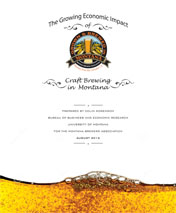 |
The Growing Economic Impact of Craft Brewing in MontanaBy Colin Sorenson, Research Economist This is a study of the economic contribution of Montana craft brewing to Montana’s economy. The first study of this nature on the brewing industry was conducted in 2012, based on operating conditions in 2010 and 2011. The current study builds on that work by investigating the trends during 2012 and 2013 and estimating the current economic contribution of the industry. There were 40 breweries operating in the state by the end of 2013, with another 11 breweries in planning. This ranks Montana third in the nation in breweries per 100,000 adults over age 21, according to the Brewers Association. |
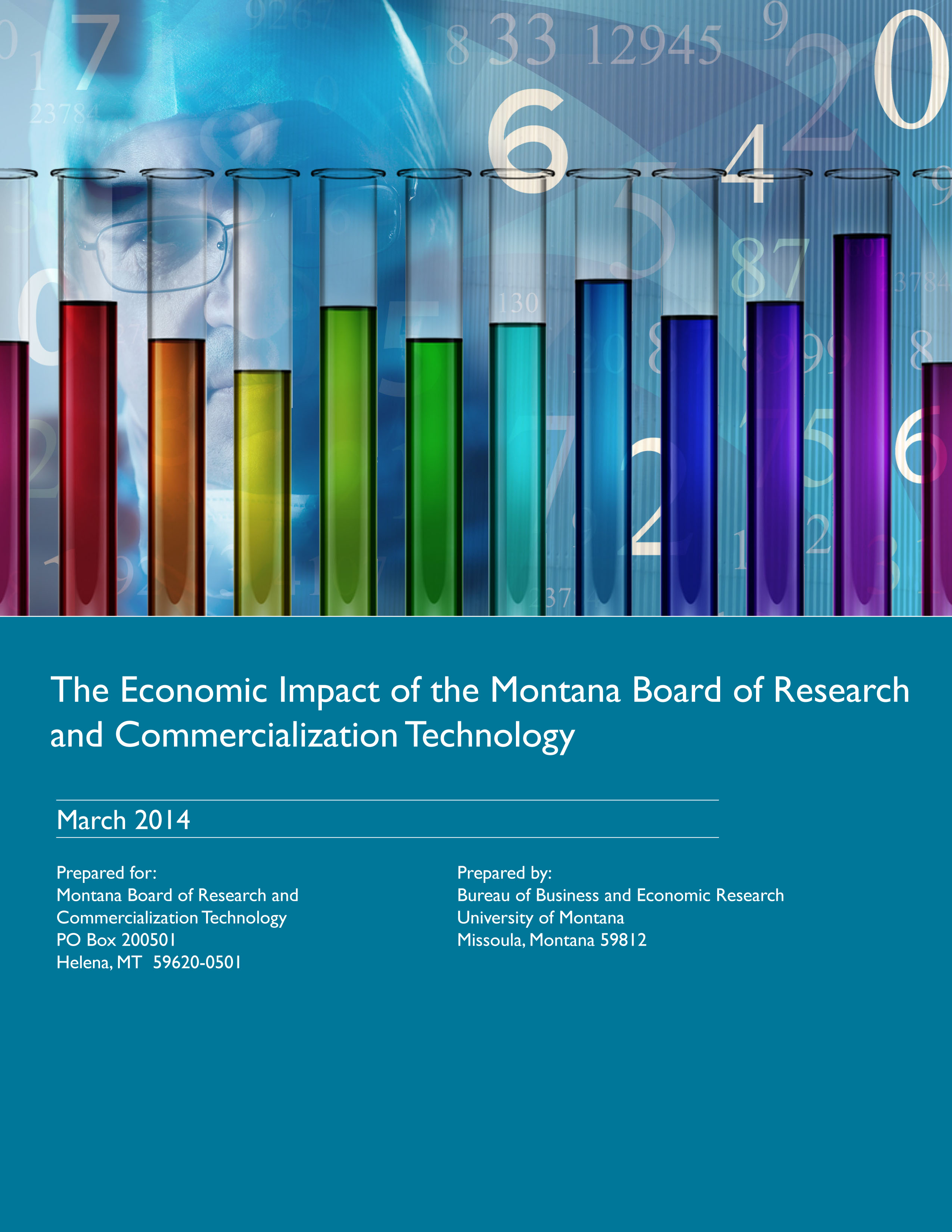 |
The Economic Impact of the Montana Board of Research and Commercialization TechnologyBy Patrick M. Barkey, BBER Director This is a study of the effects on the Montana economy of the operations of the Montana Board of Research and Commercialization Technology (MBRCT), a program established by the Montana Legislature in 2000 to encourage economic development through investment in Montana-based research projects with a clear path to commercialization. The Bureau of Business and Economic Research at the University of Montana (BBER), using a state-of-the-art policy analysis model and publicly available data on program spending and associated impacts, produced a detailed assessment of the ultimate impact of the operations of the program on employment, income, output, and population in the Montana economy. |
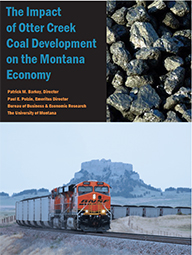 |
The Impact of the Otter Creek Coal Development on the Montana EconomyBy Patrick M. Barkey, BBER Director What could responsible coal development mean to the Montana economy? Montana’s estimated 119 billion tons of coal reserves are the largest of any state, yet we produce only a tenth of the coal mined in Wyoming. Now the prospects for new investment and new production in the Otter Creek tracts in Powder River County have propelled a new question to center stage: exactly how would the state economy be affected if an expansion in coal production were to take place? |
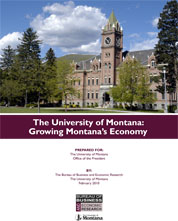 |
The University of Montana: Growing Montana's EconomyBy Patrick M. Barkey, BBER Director This report documents the research findings of how the operations and the output of The University of Montana – Missoula result in a larger, more prosperous, and more populous Montana economy. The additional earnings power of its graduates, the contributions of its research, patents and inventions, and the millions of dollars of business it conducts with Montana vendors of products and services extend its ultimate economic footprint to all corners of the state. |
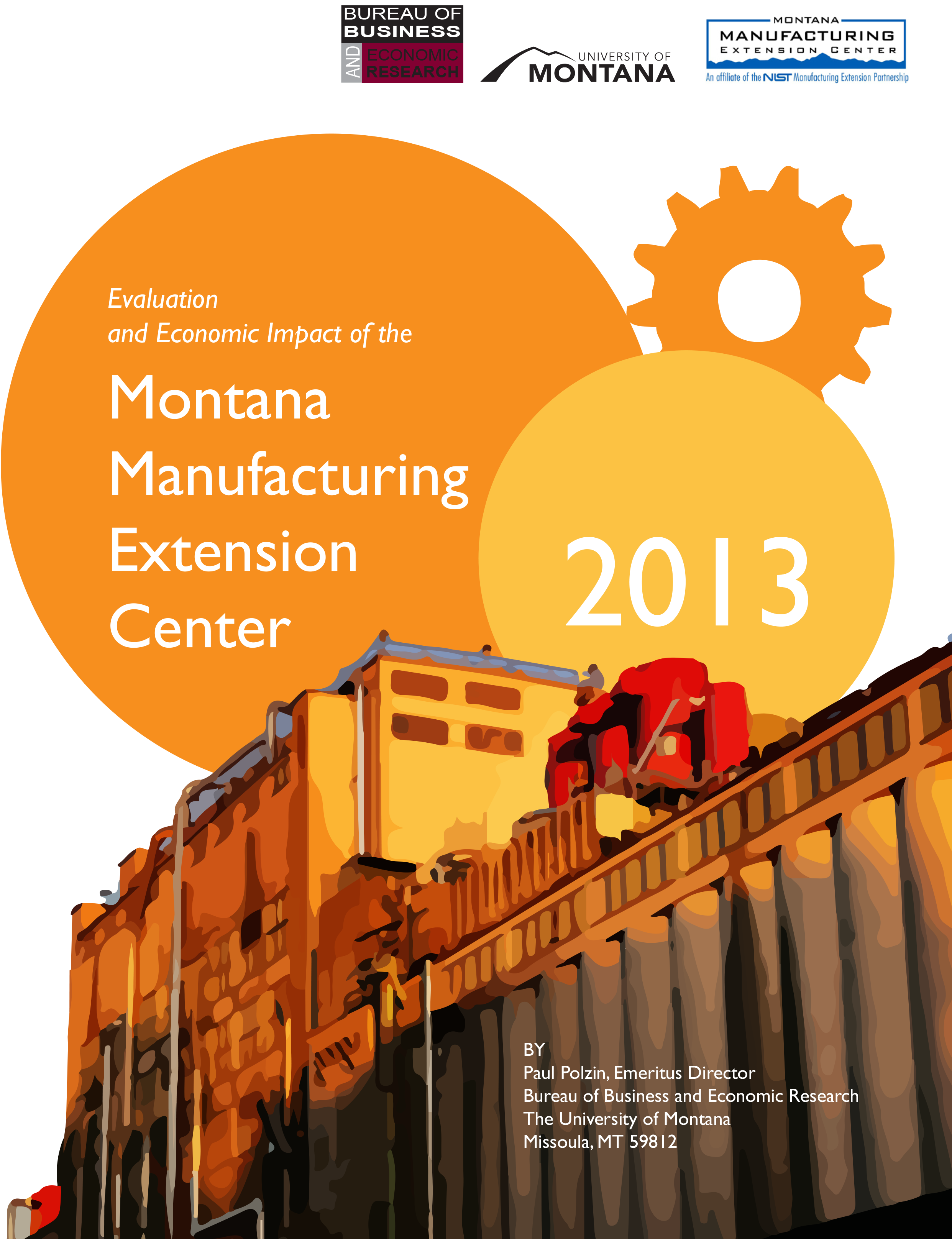 |
Evaluation and Economic Impact of the Montana Manufacturing Extension CenterBy Paul E. Polzin The Montana Manufacturing Extension Center (MMEC) works with manufacturers to create and retain jobs, innovate, reduce costs, increase profit, and save time and money. MMEC employees usually make on-site visits to manufacturing clients to assess the problems and suggest appropriate solutions and assist with implementation. MMEC closely monitors its performance by welcoming feedback and carefully following an evaluation procedure developed by the National Institute of Standards and Technology (NIST). Clients are surveyed each year about their satisfaction with the services they received. These respondents are also asked to quantify certain economic impacts and outcomes associated with MMEC visits. This report summarizes the responses received from MMEC visits during 2012. |
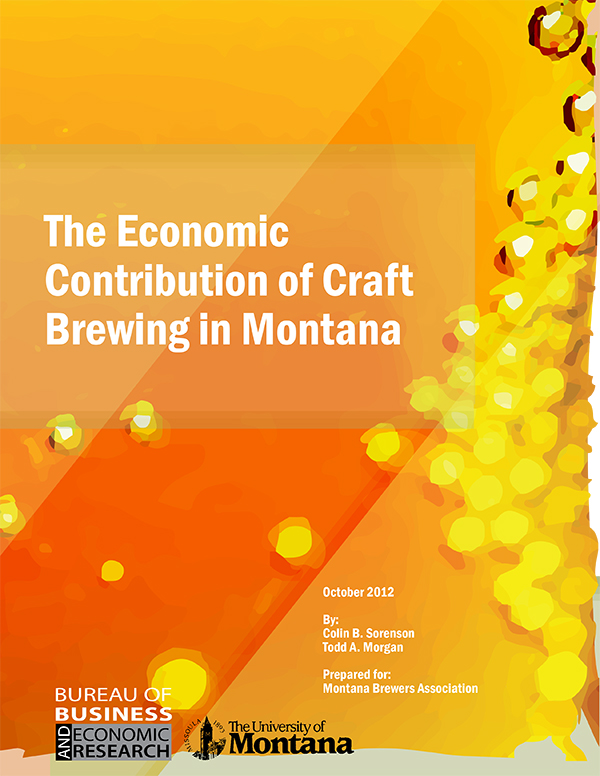 |
The Economic Contribution of Craft Brewing in MontanaBy Colin B. Sorenson and Todd A. Morgan Montana's 33 craft brewers represent a growing sector of manufacturing activity in the state, according to a new survey and economic impact study by researchers Colin Sorenson and Todd Morgan of The University of Montana Bureau of Business and Economic Research. |
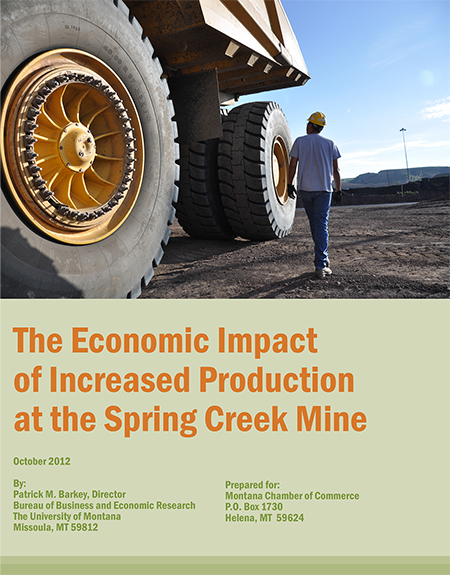 |
The Economic Impact of Increased Production at the Spring Creek MineBy Patrick M. Barkey This report summarizes the findings of an investigation into the likely impacts on the Montana economy of a significant expansion in coal production at the Spring Creek mine operated by Cloud Peak Energy near Decker, Montana. The Bureau of Business and Economic Research at The University of Montana, using a state-of-the-art policy analysis model, analyzed the employment, income, production, and other economic flows that would result from a hypothetical 20 million tons per year increase in mine output. The analysis indicates that such an expansion, if it were to take place, would have a sizable impact on employment, income, production, population, and tax revenues in the state of Montana. |
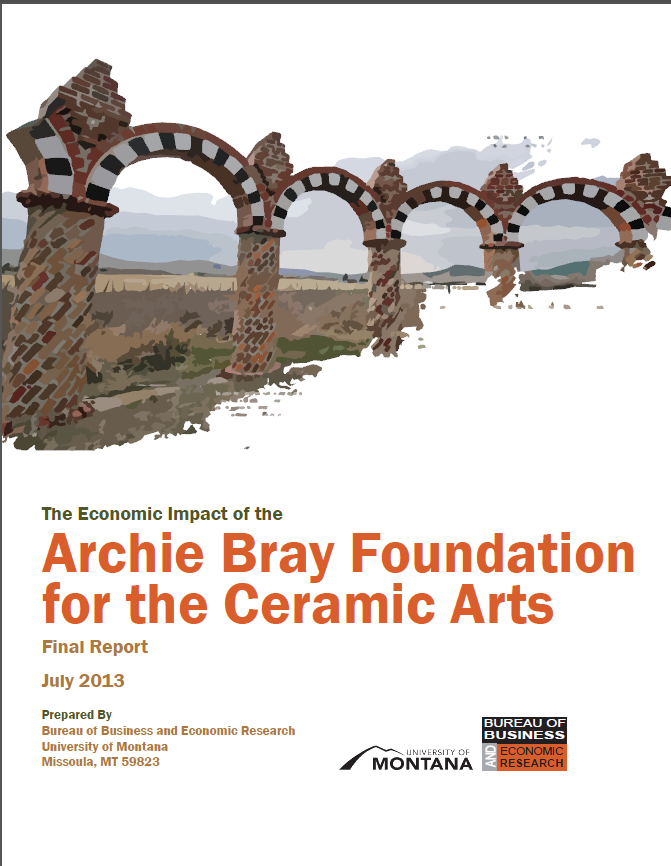 |
The Economic Impact of the Archie Bray Foundation for the Ceramic ArtsBy Patrick M. Barkey This report contains a detailed assessment of the economic impacts of the on-going operations of the Archie Bray Foundation for the Ceramic Arts, located in Helena, Montana. The Bureau of Business and Economic Research at the University of Montana, using a state-of-the-art policy analysis model, analyzed the employment, income, production, and other economic flows that are realized in the Montana economy because of the presence of Archie Bray. The analysis indicates that the facility’s production and sale of art, its ongoing education and workshops, as well as the significance of Archie Bray as a destination for cultural tourists to Montana combine to produce an impact that is significantly larger than the budget of the institution itself. |
All BBER publications are in .pdf format. Get Adobe PDF Reader.

